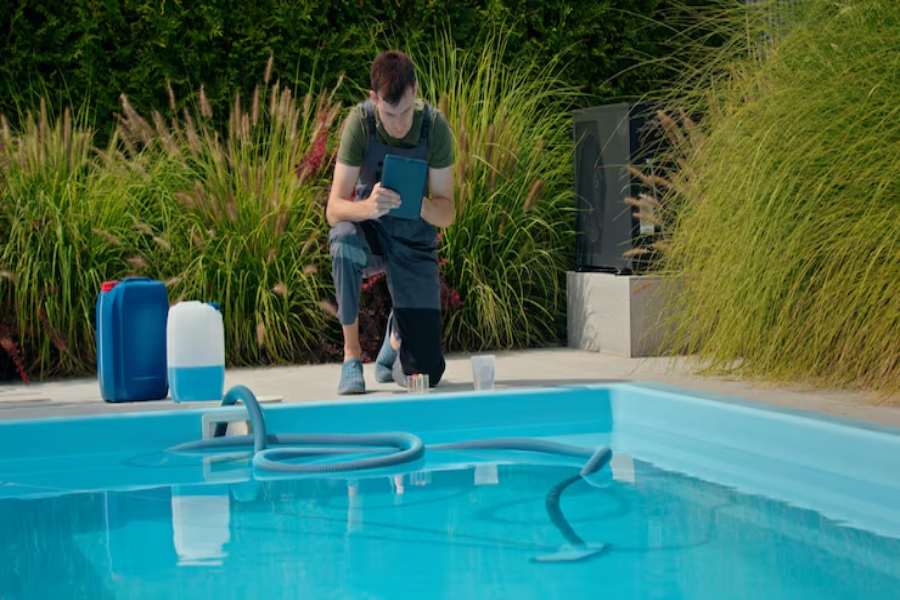What Inspectors Actually Look for in a Safe Backyard Pool Setup

Homeowners prepping for a pool inspection often focus on the obvious. The water is clean, the patio is swept, and the gate latches. Everything looks ready until the checklist comes out and the inspection takes a turn. Safety inspections go deeper than appearances. What passes for common sense doesn’t always pass code.
Inspectors come with specifics in mind. They measure, test, and observe with child safety as the priority. That doesn’t mean turning the backyard into a fortress. This means that every safety layer must work as intended. Not just in theory. In practice.
Barriers That Do More Than Look Good
Pool fences might look clean and sturdy, but style won’t carry a failed inspection. The height matters. The spacing matters. So does how the gate works after three months of sun and dust.
Inspectors walk the perimeter. They check for footholds. They look at how the latch lines up when the gate swings shut. A California pool fence needs to meet strict minimums, not just for height, but for function. The gate should close and latch on its own without help from the person behind it.
It also needs to swing outward, away from the pool, and be separate from the general backyard entrance when possible. If the home forms part of the barrier, the rules shift. In those cases, window alarms, door sensors, and secondary locks come into play.
Gates and Entrances Get the Most Scrutiny
A fence is only as strong as the access point. Gates get tested more than any other part of the barrier. They must latch on their own every time, even when opened gently. Spring tension needs to hold. Hinges must stay aligned.
The latch must be high enough that small kids can’t reach it. If a step or planter sits nearby, that height advantage disappears. Inspectors take note of anything climbable within reach. Fences pass or fail depending on what surrounds them, not just what they’re made of.
Distance Between the House and the Pool
Even if the fence passes, the space between the home and the water matters. Backyards where the home opens directly to the pool require extra safeguards. That means door alarms with sound levels above 85 decibels. It also means devices that reset automatically after being opened, not systems that stay disarmed once a door has been unlocked.
Glass sliders, French doors, or folding panels all count. Every potential entryway needs protection.
Drain Covers, Suction Safety, and Water Movement
Beyond fences and alarms, inspectors also look at what’s under the surface. Every pool must comply with the Virginia Graeme Baker Pool & Spa Safety Act. That means anti-entrapment drain covers. For some pools, it also means dual drains or vacuum release systems that cut power if suction becomes blocked.
Drain covers should be properly installed, not loose or damaged. If a spa or pool has a single suction point, backup measures need to be in place. Inspectors check for secure installation and visible manufacturer labels. This part of the inspection protects against hidden risks that don’t always show up until it’s too late.
The Checklist Most Inspectors Follow
While the specifics can vary slightly by city or county, most pool safety inspections rely on a checklist with the same top-line criteria:
- Pool fence at least 60 inches tall, measured from the outside
- Gaps between vertical slats under 4 inches
- No more than two inches between the bottom of the fence and the ground
- Gate is self-closing and self-latching, opens away from the pool
- Latch is at least 54 inches off the ground
- No climbable objects within 36 inches of the fence
- Doors leading to pool area have alarms or self-closing mechanisms
- Approved drain covers installed and in good condition
- Any pool cover used is rated for safety, not just for debris
This list forms the foundation of most California inspections. If any item falls short, approval gets delayed until it’s corrected.
Function Over Flash
The common thread in every pool safety inspection is consistency. Nothing should rely on memory, habit, or workarounds. Gates must latch without a second pull. Alarms must sound every time a door opens. Covers must hold weight, not just look tidy.
Passing inspection doesn’t mean checking a box. It means the pool is protected even when no one’s watching. Inspectors want to see a system that holds up in real conditions, not just during the visit.
